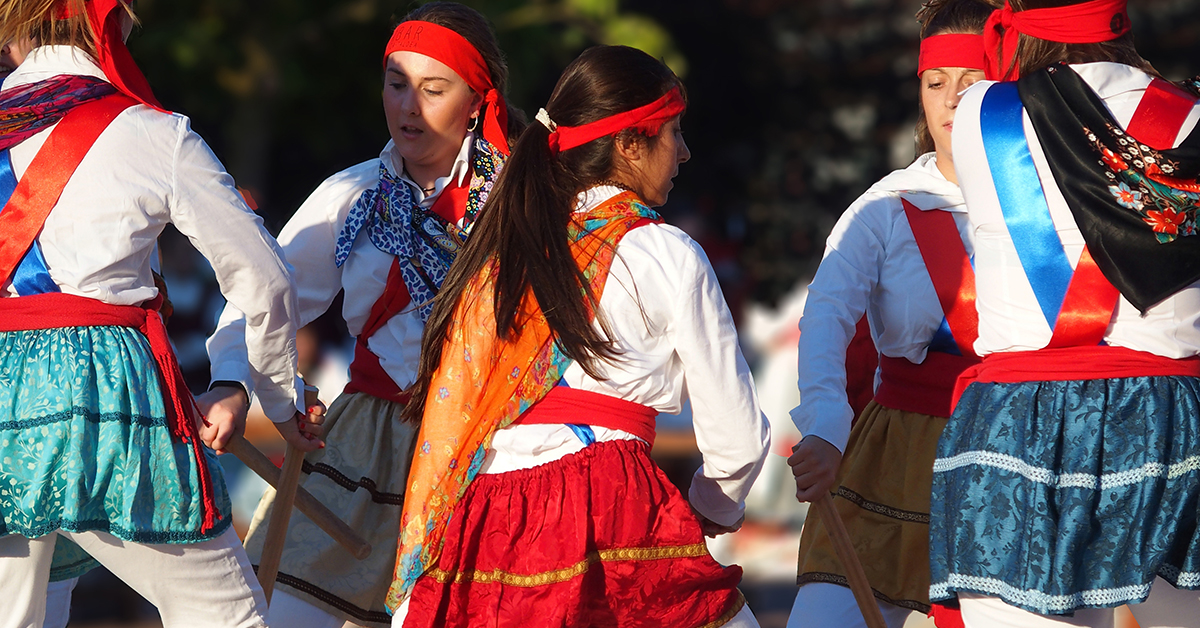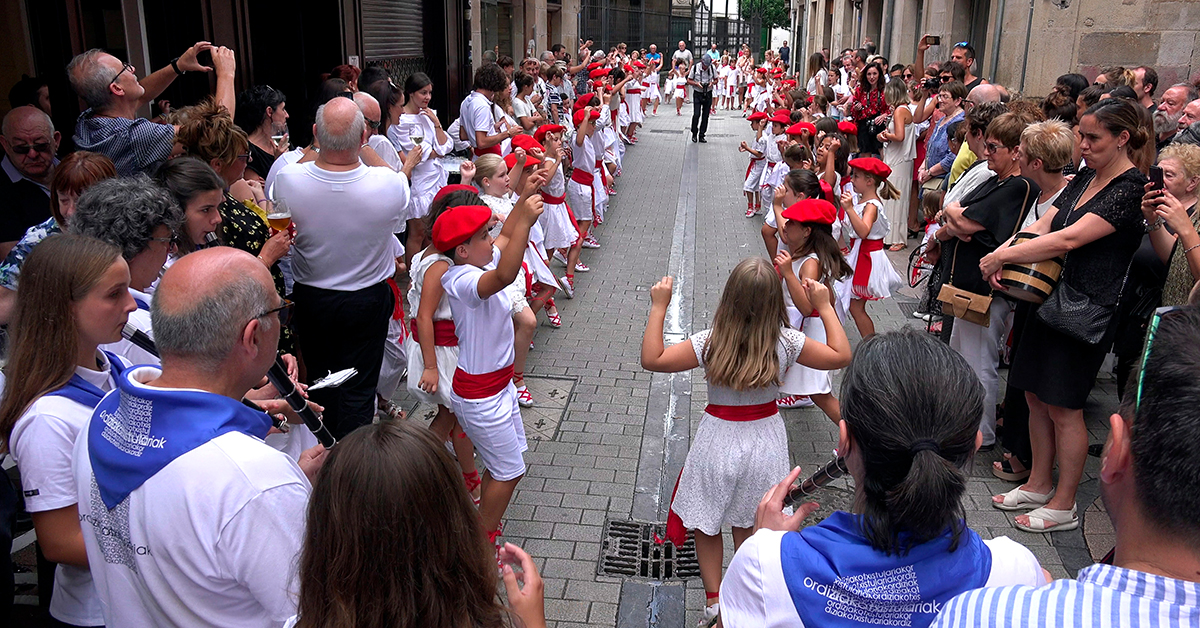Basque ethnography at a glance
Dance and creative movement are universal forms of communication and self-expression (language through motion), generally associated with music or rhythm, their creation, preservation and execution having fallen on different social layers throughout history.
Basque ‘traditional’ dance, as we know it, is the result of a process of survival over time, with its ups and downs, and more interruptions, in its performance, than we might think of. Its contours should therefore not fool us into defending a supposed past longevity and authenticity which would force us to travel back to the ‘night of time’.
So that folk dances which are currently danced far and near across our country, either in their places of origin or in other localities, in a cyclical and ‘ritualized’ manner, be catalogued with all the relevant information, the Department of Heritage of the Basque Government commissioned the cultural association Zatak Herri Ondarea. The task was carried out between 2015 and 2019 in the territories of Araba, Bizkaia and Gipuzkoa.
Serving as notaries, the members of the working team would attend the feast and transfer the information obtained on the spot, including the context, as well as historical data, to a database created for that purpose. Each and every element which makes up the cultural heritage concerned is presented in a structured way.
The objectives of the study might be summarized as follows: to provide a comprehensive list of goods, considered primary in the world of dance; to agree with the administration on the possibility of declaring a particular good Intangible Cultural Heritage, depending on the risk it runs or the extent of the practice; and to disseminate and promote dance at educational and pedagogical level through online visualization and by other means. We hope that, in a short space of time, some or all of these claims be implemented.
Several conclusions can be drawn from the 449 data sheets produced. Among them, that 1/3 of the dancers correspond to officially associated dance groups, the rest being folks who, individually or collectively, perform on the feast day just for the occasion. Moreover, more than half of all the troupes of giants and big-heads are in fact associations, and the vast majority use municipally-owned figures.
Very few dance groups have musicians within their ranks. They are usually hired, depending largely on the musical instruments needed to accompany the dances.
I would not like to conclude this short article without taking a moment for reflection today, December 2020. The world of Basque ‘traditional’ dance, at the level of formally associated collectives, comprises the safeguarding and social manifestation of cultural goods which are a combination of tangible and intangible heritage. Dance groups are also, among other things, key exponents of internal and external relationships, acting as economic flow intermediaries with a long journey which covers especially the last more than forty years. The ongoing pandemic is creating a hole in its flotation line with unpredictable results. There is still time to reverse the present situation, but if solutions are not sought, preferably from within, it might be too late.
Emilio Xabier Dueñas – Folklorist and ethnographer
Translated by Jaione Bilbao – Ethnography Department – Labayru Fundazioa
The text is also accessible in Basque and Spanish, either by changing the language of the website or by clicking on the following links: Euskal dantza, kultura-ondarea: katalogo errebindikatzailea and La danza vasca como patrimonio cultural: un catálogo reivindicativo.




